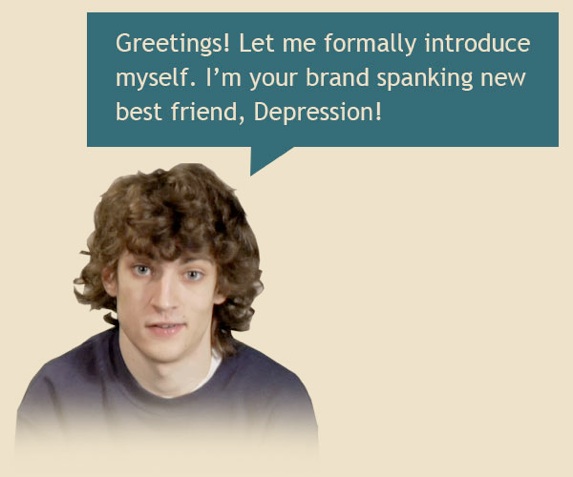Latest Public Service Radio Minute
Loss of EmploymentLoss of Employment, MP3, 1.3MB
Listen to or download all our PSAsSupport Our Work
Please donate so we can continue our work to reduce the stigma of psychiatric illness, encourage research, and support educational activities for behavioral health professionals and the public. Ways you can donate and help are on our Support and Donations page. Thank you!
More InfoLatest News Around the Web
The More Time Young Adults Use Popular Social Media, The Greater The Link To Depression
HealthDay (3/24, Mozes) reports, “The more time young adults spend using popular social media, the greater the link to depression,” the findings of a 1,800-participant study funded by the National Institutes of Health and published in the April 1 issue of the journal Depression and Anxiety suggest. Researchers found that “when social media patterns were stacked up against depression status…those who used social media the most were about 2.7 times more likely to be depressed than those who used such forums the least.”
Related Links:
— “Could Lots of Time Spent on Social Media Be Tied to Depression?,” Alan Mozes, HealthDay, March 24, 2016.
Increase In NFL Head Trauma Fuels Rise Of Memory-Loss Businesses
The New York Times (3/23, B9, Belson, Subscription Publication) reported that “with the expectation that more N.F.L. players will suffer dementia from repeated head hits, businesses that cater to people with memory loss are gearing up for what could be droves of new clients in the near future.” The article notes that “an actuarial report commissioned by the N.F.L. found that 28 percent of all players would be found to have one of the compensable diseases included in a settlement with retired players who had accused the league of hiding from them the dangers of concussions.” Among the diseases were Alzheimer’s, dementia, Parkinson’s, amyotrophic lateral sclerosis and chronic traumatic encephalopathy.
Related Links:
— “Dementia Care, Tailored to N.F.L. Retirees,” Ken Belson, New York Times, March 22, 2016.
SSRI Antidepressant Use May Not Increase Heart Risks
HealthDay (3/23, Mozes) reports that selective serotonin reuptake inhibitor (SSRI) antidepressants appear not “to raise the risk for heart trouble among young and middle-age patients,” the findings of a 238,963-patient study published online March 22 in the BMJ suggest. After examining data on “different types of antidepressants, as well as dosage and duration,” researchers “concluded there was ‘no significant association’ between SSRIs and an increased risk for heart attack, stroke or an irregular heartbeat.”
Related Links:
— “Study Finds No Heart Risk From SSRI Antidepressants,” Alan Mozes, HealthDay, March 23, 2016.
Persistent Marijuana Use May Lead To More Economic, Social Issues In Midlife
Newsweek (3/23, Main) reports new research revealed that those “who smoke marijuana on a regular basis for years and those who are dependent on it are significantly more likely to have economic and social problems at midlife than those who use it only occasionally or not at all.” Researchers analyzed data from nearly 1,000 people in New Zealand who were interviewed regularly from birth to age 38. The findings were published in the journal Clinical Psychological Science.
Related Links:
— “REGULAR MARIJUANA USE LINKED TO ECONOMIC AND SOCIAL PROBLEMS,” Douglas Main, Newsweek, March 23, 2016.
Patients Who Develop Depression After Being Diagnosed With Heart Disease May Be More Likely To Have Heart Attack Or Die Than Those Without Depression
HealthDay (3/23, Preidt) reports that research suggests individuals “who develop depression after being diagnosed with heart disease may be more likely to have a heart attack or die than those without depression.” Researchers looked at data on approximately “23,000 heart patients in…Ontario who were diagnosed with heart disease.” The investigators found that over “an average follow-up of three years, those with depression were 83 percent more likely die of any cause and 36 percent more likely to have a heart attack than those without depression.” The research was scheduled to be presented at the American College of Cardiology meeting.
Related Links:
— “Depression Tied to Worse Outcomes for Heart Patients,” Robert Preidt, HealthDay, March 23, 2016.
Foundation News
Nothing Found
It seems we can’t find what you’re looking for. Perhaps searching can help.

